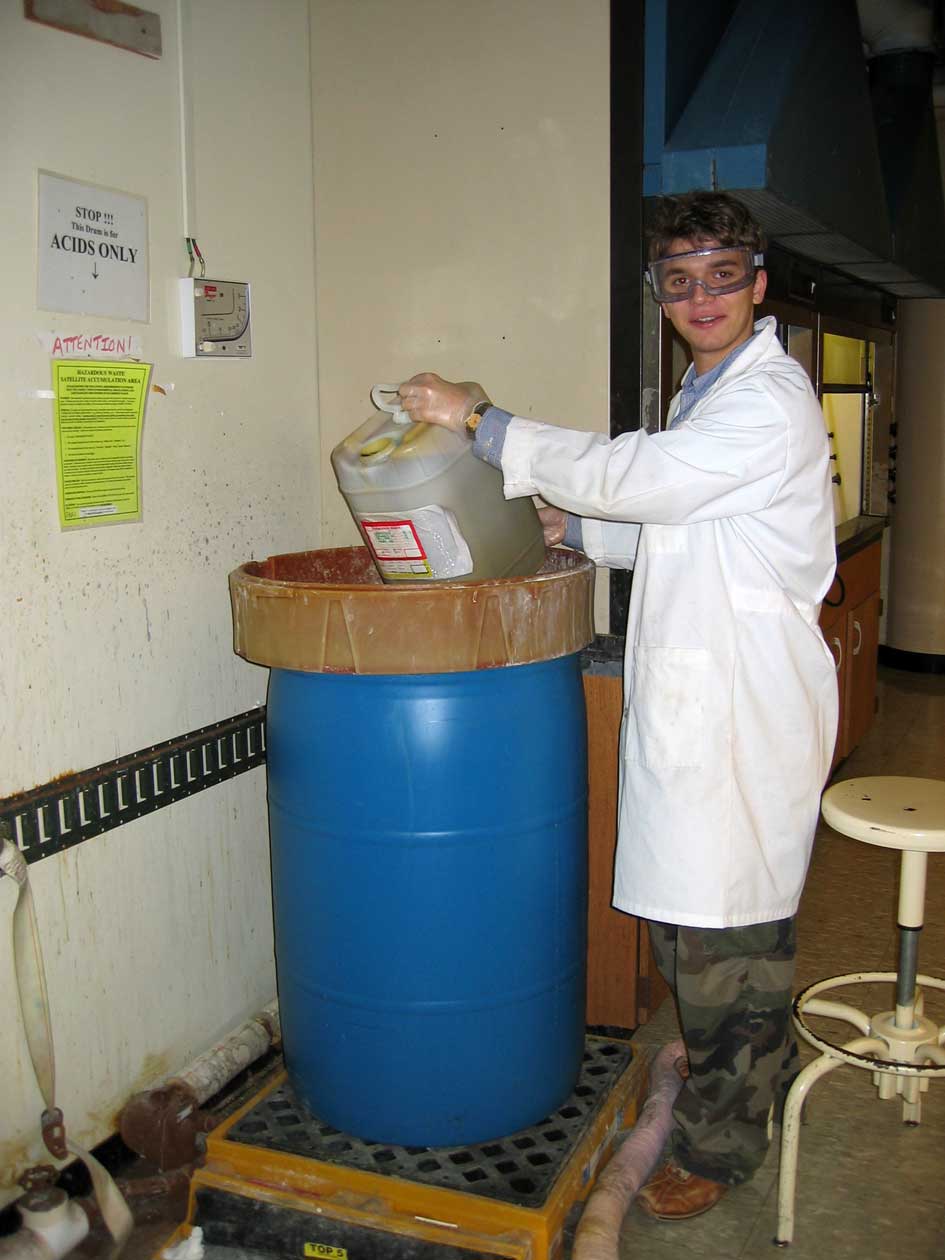The glamorous life: inorganic hazardous waste disposal
 The mystery of what happens to all that chemical waste is explored.
The mystery of what happens to all that chemical waste is explored.
Ingredients: Liters of inorganic acids and salts, hazardous waste "generator," lab coat, gloves, goggles
Procedure: A complete recipe follows.
1. Collect inorganic chemical wastes as you work through these demonstrations.
2. Dispose of them properly.
Understanding: No one can argue that an understanding of chemistry is an essential component of any liberal arts education. Just as the preparation and digestion of food produces wastes, the preparation and digestion of chemical information produces hazardous chemical wastes. The proper disposal of those wastes is a challenging and costly business that is essential to the protection of our environment.
At Boston University, the proper disposal of chemical hazardous waste is overseen by the Office of Environmental Health and Safety working with Clean Harbors. What becomes of our hazardous waste? A variety of things.
Much of the hazardous waste can be treated (using pH neutralization, filtration and reaction), reduced in volume (through the removal of solvent that is less hazardous or not hazardous), and disposed of by incineration, landfill, or discharge into public sewer systems. As a last resort, some chemical waste must be disposed of in hazardous waste landfill sites. Approximately 95% of the waste generated in our introductory chemistry laboratories and demonstrations is incinerated.
A pH imbalance in our hazardous waste
Question: Why is it that the vast majority of the chemical waste that we produce in our demonstrations consists of inorganic acid waste? Why not basic waste? Why is there this asymmetry on the pH spectrum when it comes to our hazardous waste?